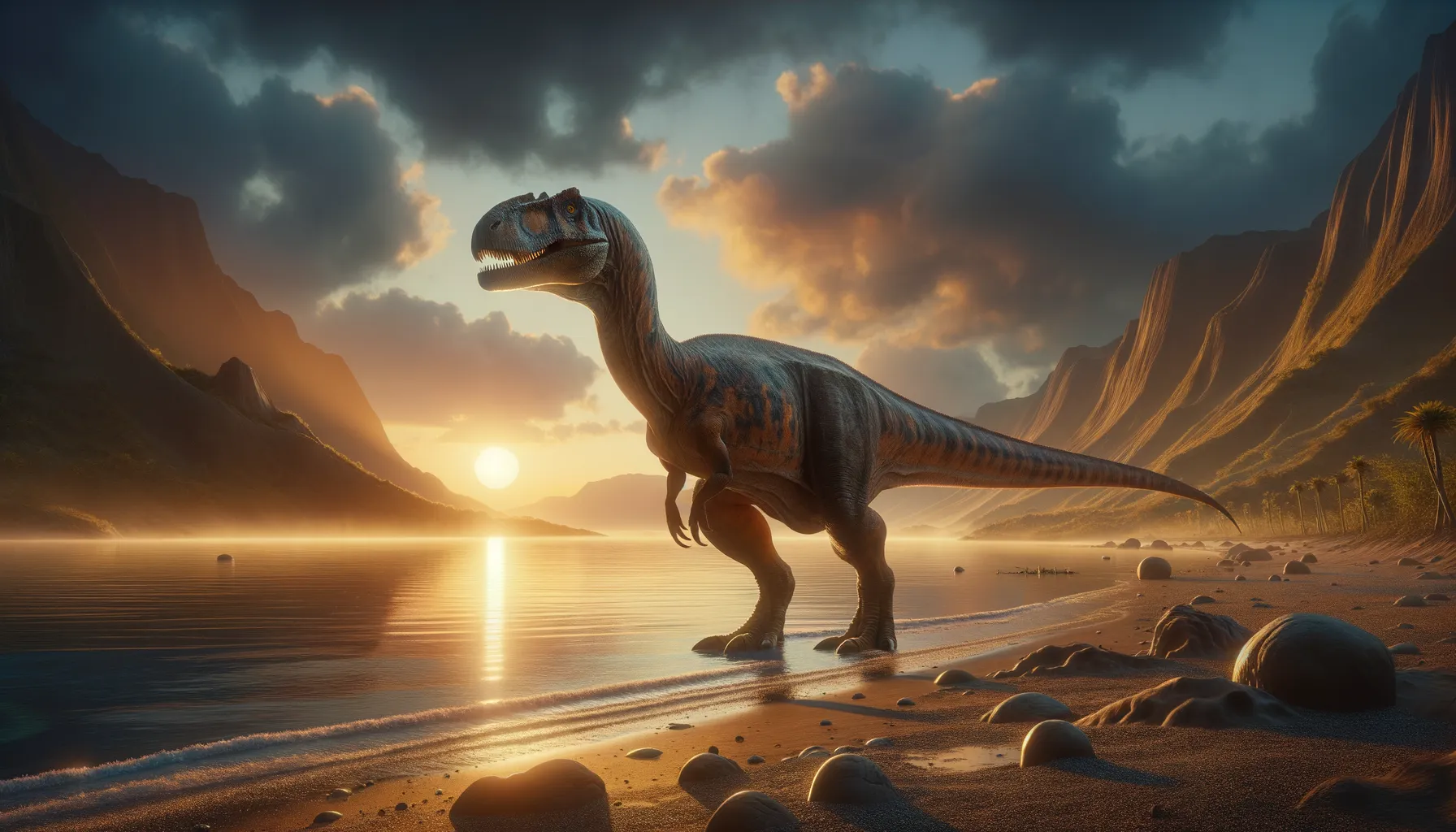
Edmontosaurus
The mighty grazer of ancient landscapes.
Period
Cretaceous
Length
Approximately 12 meters long.
Height
About 3 meters at the hips.
Weight
Between 3 to 4 metric tons.
The Edmontosaurus was a large, herbivorous dinosaur known for its duck-billed appearance. It inhabited the late Cretaceous period and was one of the last dinosaur species before the mass extinction. This dinosaur was primarily a plant-eater and relied on its strong hind legs for movement. The Edmontosaurus is well-studied thanks to numerous fossil findings, shedding light on its way of life and interactions within its ecosystem.
Diet
Edmontosaurus primarily fed on a variety of plants. Its diet consisted of leaves, seeds, and fruits, enabling it to thrive in diverse habitats. Its specialized beak helped efficiently strip foliage from trees and shrubs.
Hunting
As a herbivore, Edmontosaurus did not hunt for meat. Instead, it foraged for plant matter, using its beak to graze efficiently. Its size offered protection against predators rather than engaging in combative hunting.
Environmental challenges
Edmontosaurus faced frequent environmental changes, including shifts in climate and fluctuating food availability. During harsh winters or droughts, finding enough vegetation was challenging. Predators also posed significant threats, especially to younger or weaker individuals. Despite these challenges, they adapted through migration and strong social behavior.
Speed
Moderate, capable of running in short bursts.
Lifespan
Estimated around 20 to 30 years.
First discovery
First discovered in North America in 1912.
Fun Facts
- Edmontosaurus was a duck-billed dinosaur that lived about 66 million years ago during the late Cretaceous period.
- It was a herbivore, which means it primarily ate plants, using its flat beak to strip leaves.
- Edmontosaurus could grow up to about 12 meters (40 feet) long, making it one of the largest hadrosaurids.
- Fossils of Edmontosaurus have been found in both North America and Asia, showcasing its wide range during its time.
- Unlike many other dinosaurs, scientists believe Edmontosaurus may have lived in herds like modern-day elephants.
- The name Edmontosaurus means 'lizard from Edmonton,' named after the area in Canada where its remains were first discovered.
- Interestingly, some specimens of Edmontosaurus show signs of injuries, suggesting it could have been preyed upon by predators like T. rex.
Growth and Development
Edmontosaurus hatched from eggs, similar to modern reptiles. Juveniles grew rapidly to evade predation, reaching near-full size by their teenage years. This rapid growth required constant feeding, especially on nutrient-rich plants. They developed prominent crests and robust bodies as they matured.
Habitat
Edmontosaurus lived in diverse environments including forests, floodplains, and coastal regions. These habitats provided ample vegetation and water sources essential for their survival. The dynamic landscapes supported a wide array of plant life year-round, making it ideal for herbivores.
Interaction with other species
Edmontosaurus coexisted with other dinosaur species, including predators like Tyrannosaurus rex. Their size and herd behavior offered protection against these threats. Interactions within their own species often involved social communication and cooperative behavior, particularly during migrations.
Natural lifespan
Their natural lifespan often reached 20 to 30 years.
Reproduction
Edmontosaurus reproduced by laying eggs in nests built on the ground. Females likely took care to select safe, hidden locations for nesting. Once laid, the eggs incubated through the warmth of the sun and surrounding vegetation.
Social behaviour
They exhibited herd-like behavior, which offered protection from predators and facilitated efficient foraging. Migrations were a part of their social structure, as they traveled long distances for better grazing areas. Vocalizations and physical displays were likely used for communication within groups.
Fossil locations
Fossils of Edmontosaurus have primarily been found in North America, especially in regions like Alberta, Montana, and South Dakota. These discoveries have contributed significantly to understanding their anatomy and behaviors. The fossil evidence from these areas shows excellent preservation, offering insights into their skin patterns and muscle structures.
